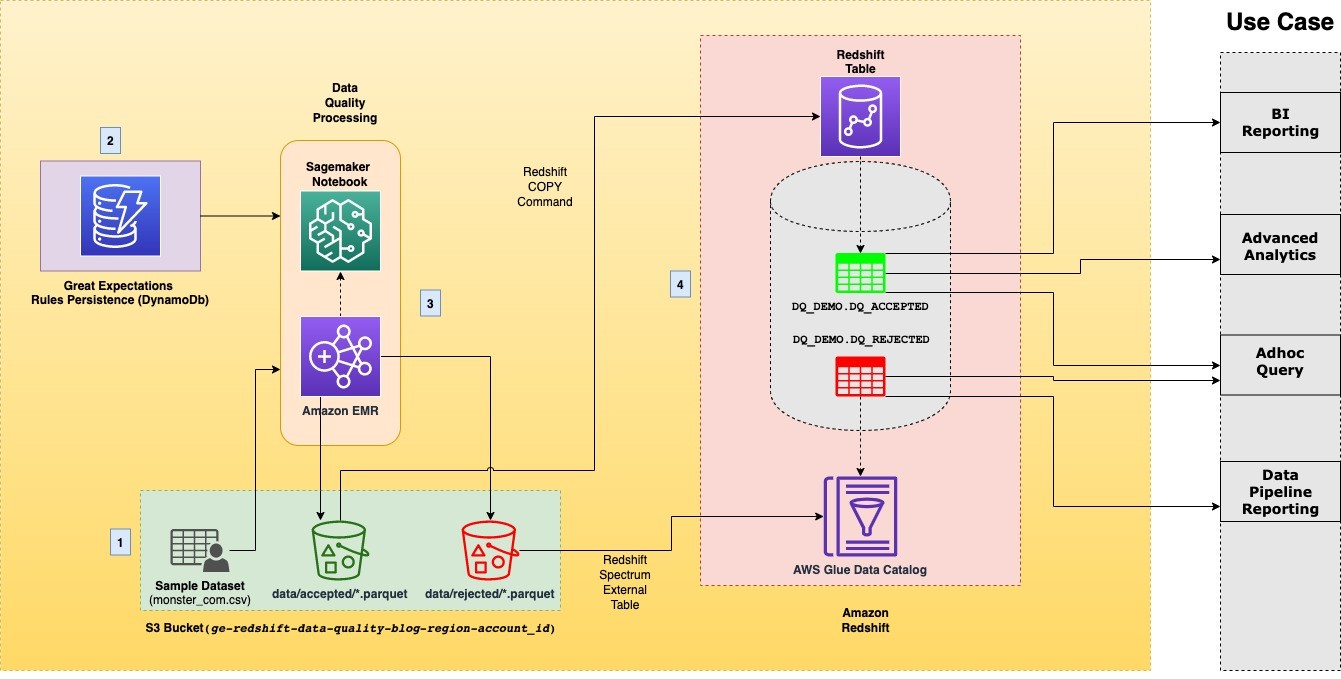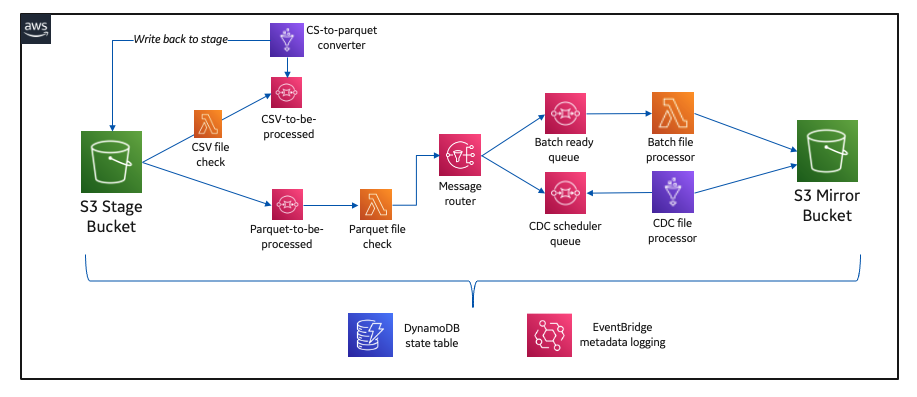AWS Big Data Blog
Category: Amazon Redshift
Security considerations for Amazon Redshift cross-account data sharing
Data driven organizations recognize the intrinsic value of data and realize that monetizing data is not just about selling data to subscribers. They understand the indirect economic impact of data and the value that good data brings to the organization. They must democratize data and make it available for business decision makers to realize its […]
Provide data reliability in Amazon Redshift at scale using Great Expectations library
Ensuring data reliability is one of the key objectives of maintaining data integrity and is crucial for building data trust across an organization. Data reliability means that the data is complete and accurate. It’s the catalyst for delivering trusted data analytics and insights. Incomplete or inaccurate data leads business leaders and data analysts to make […]
Design and build a Data Vault model in Amazon Redshift from a transactional database
This blog post was updated in June, 2022 to update the entity relationship diagram. Building a highly performant data model for an enterprise data warehouse (EDW) has historically involved significant design, development, administration, and operational effort. Furthermore, the data model must be agile and adaptable to change while handling the largest volumes of data efficiently. […]
Federate Amazon Redshift access with SecureAuth single sign-on
Amazon Redshift is the leading cloud data warehouse that delivers up to 3x better price performance compared to other cloud data warehouses by using massively parallel query execution, columnar storage on high-performance disks, and results caching. You can confidently run mission-critical workloads, even in highly regulated industries, because Amazon Redshift comes with out-of-the-box security and […]
Use the Amazon Redshift SQLAlchemy dialect to interact with Amazon Redshift
Amazon Redshift is a fast, scalable, secure, and fully managed cloud data warehouse that enables you to analyze your data at scale. You can interact with an Amazon Redshift database in several different ways. One method is using an object-relational mapping (ORM) framework. ORM is widely used by developers as an abstraction layer upon the […]
How GE Aviation built cloud-native data pipelines at enterprise scale using the AWS platform
This post was co-written with Alcuin Weidus, Principal Architect from GE Aviation. GE Aviation, an operating unit of GE, is a world-leading provider of jet and turboprop engines, as well as integrated systems for commercial, military, business, and general aviation aircraft. GE Aviation has a global service network to support these offerings. From the turbosupercharger […]
Apply CI/CD DevOps principles to Amazon Redshift development
CI/CD in the context of application development is a well-understood topic, and developers can choose from numerous patterns and tools to build their pipelines to handle the build, test, and deploy cycle when a new commit gets into version control. For stored procedures or even schema changes that are directly related to the application, this […]
Accelerate self-service analytics with Amazon Redshift Query Editor V2
August 2023: This post was reviewed and updated with new features. Amazon Redshift is a fast, fully managed cloud data warehouse. Tens of thousands of customers use Amazon Redshift as their analytics platform. Users such as data analysts, database developers, and data scientists use SQL to analyze their data in Amazon Redshift data warehouses. Amazon […]
Query hierarchical data models within Amazon Redshift
In a hierarchical database model, information is stored in a tree-like structure or parent-child structure, where each record can have a single parent but many children. Hierarchical databases are useful when you need to represent data in a tree-like hierarchy. The perfect example of a hierarchical data model is the navigation file and folders or […]
Now Available: Updated guidance on the Data Analytics Lens for AWS Well-Architected Framework
Nearly all businesses today require some form of data analytics processing, from auditing user access to generating sales reports. For all your analytics needs, the Data Analytics Lens for AWS Well-Architected Framework provides prescriptive guidance to help you assess your workloads and identify best practices aligned to the AWS Well-Architected Pillars: Operational Excellence, Security, Reliability, […]








